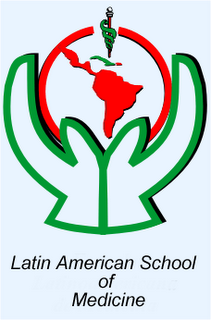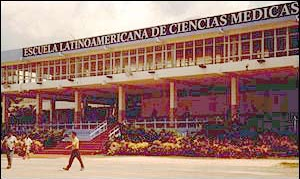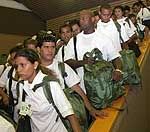The Latin American School of Medicine, symbol of solidarity and union among American people.
 On the first of November 1998, at the conclusion of the XII Forum on Science and Technology, and still fresh with the memories of the most horrendous images that hurricanes “George” and “Mitch” left as they had cut through Central America and the Caribbean, Fidel announced to the world the creation of this wonderful project. In September of the following year, the first courses began with 1,933 students.
On the first of November 1998, at the conclusion of the XII Forum on Science and Technology, and still fresh with the memories of the most horrendous images that hurricanes “George” and “Mitch” left as they had cut through Central America and the Caribbean, Fidel announced to the world the creation of this wonderful project. In September of the following year, the first courses began with 1,933 students.
Cuba had sent brigades consisting of hundreds of doctors and health personal to these countries so near and dear and established an on-going presence. It had lent its services in the roughest and most inhospitable places where in many cases no one had ever seen a doctor and there they developed an Integral Health Program.
This new project, however, consisted of offering scholarships to young people from those towns and disadvantaged countries to study medicine; the aim was that they return to their places of origin in six or seven years to replace the Cuban doctors.
After five years of having announced this plan, today youth from 24 countries, 19 of them Latin American and Caribbean nations and 4 African countries study at ELAM. The 24th country is the United States, where students who cannot afford the expensive medical studies in that country are enrolled.
Every year at ELAM, 1,500 new students enter. In the first six years there will total 10,000 students. Most are from low-income families and remote places. They represent more than a hundred ethnic groups. They come with their own cultures, customs, ideologies and religious beliefs, all of which are respected and form the great diversity that contributes to the enrichment and education of all.
With this initiative, Fidel teaches us once again that the practice of internationalism is to repay our debt to humanity.

